By Jason Apuzzo. A new trailer for Act of Valor is now out. Check it out above. Featuring active-duty Navy SEALs in action, Act of Valor opens nationwide on February 17th.
Posted on November 15th, 2011 at 12:26pm.
By Jason Apuzzo. A new trailer for Act of Valor is now out. Check it out above. Featuring active-duty Navy SEALs in action, Act of Valor opens nationwide on February 17th.
Posted on November 15th, 2011 at 12:26pm.
 By David Ross. I’ve always considered myself on Kevin Smith’s side. I love salty and unguarded talk. As a spigot of quotable material, Kevin Smith (see here) rivals John Mayer and Tarantino, whose brains likewise seem not to have evolved the internal p.c. censors the rest of us are equipped with. Though it may involve the lowest kind of potty humor, such talk is always close to literature in its impulse to amuse itself and flout any interfering proprieties. At the same time, I could bear only a few minutes of Smith’s stand-up film Too Fat for Forty (2010). I didn’t mind the anti-Bush jabs in concept, but I very much minded their pandering obviousness and staleness. When Red State came along soon after, I girded myself for the worst. I expected a muddle of hysterical smears: a Garafalo-meets-Tarantino gorefest.
By David Ross. I’ve always considered myself on Kevin Smith’s side. I love salty and unguarded talk. As a spigot of quotable material, Kevin Smith (see here) rivals John Mayer and Tarantino, whose brains likewise seem not to have evolved the internal p.c. censors the rest of us are equipped with. Though it may involve the lowest kind of potty humor, such talk is always close to literature in its impulse to amuse itself and flout any interfering proprieties. At the same time, I could bear only a few minutes of Smith’s stand-up film Too Fat for Forty (2010). I didn’t mind the anti-Bush jabs in concept, but I very much minded their pandering obviousness and staleness. When Red State came along soon after, I girded myself for the worst. I expected a muddle of hysterical smears: a Garafalo-meets-Tarantino gorefest.
As advertised, Red State tears into both evangelicalism and the post-9/11 security apparatus. The Reverend Abin Cooper is the leader of a small Branch Davidian-like flock whose services incorporate ritual murder of kidnapped sinners. The ATF and FBI careerists who raid his compound on trumped up terrorist charges are little better. Arguably they’re worse. Their own brand of murder is bureaucratic and amoral. They murder on behalf of their resumes and pensions. No surprises so far. Evangelicals – evil. Patriot Act and its enforcers – equally evil.
The weird swerve involves Smith’s sneaking admiration for Cooper, who’s suavely played by Tarantino veteran Michael Parks. Smith rejects the trustiest cliché in the anti-evangelical arsenal by declining to portray Cooper as a hypocrite. I was sure Cooper was going to be unveiled in an unsurprising ‘surprise’ ending as a homosexual, child molester, cross-dresser, or sex-crazed bigamist. But no! He practices what he preaches. Nor is Cooper a coward, a fool, or a monster, though of course he commits terrible crimes in the name of God. Against all odds and expectations, he emerges as a seductive anti-hero who recalls no less a figure than Francis Marion Tarwater, the backwoods prophet of Flannery O’Connor’s masterpiece The Violent Bear it Away. Cooper is impossible not to like, even as he’s impossible not to abhor. Continue reading LFM Review: Kevin Smith’s Red State
By Jason Apuzzo. While we’re on the subject of major figures of the Cold War era (see the J. Edgar review below), a new trailer has just arrived for The Iron Lady, about Margaret Thatcher.
So will this be the hit job many people are fearing, or something more complex and true-to-life? Judge for yourself.
Posted on November 14th, 2011 at 11:26am.
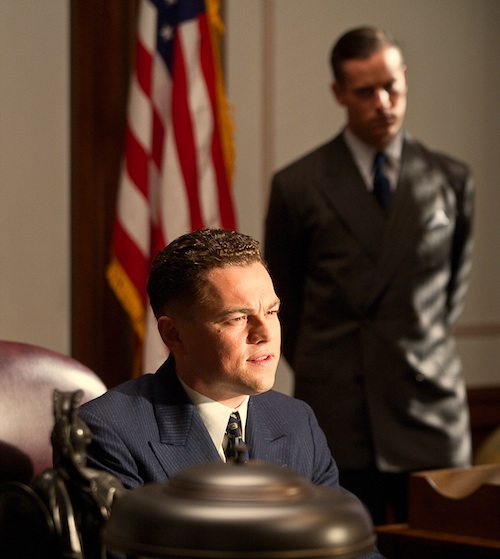
By Jason Apuzzo. THE PITCH: Director Clint Eastwood and star Leonardo DiCaprio bring the colorful and controversial life of legendary FBI director J. Edgar Hoover to the big screen, in a sprawling and complex biopic covering some 50+ years of American domestic history.
THE SKINNY: Eastwood’s relaxed, naturalistic directing style combines with a charismatic performance from DiCaprio to create a mostly sympathetic portrait of Hoover, albeit one that traffics in shopworn clichés of ‘50s anti-communist ‘paranoia’ and Kinsey-style sexual repression. J. Edgar bites off far more history than it can chew in 2 1/2 hours, however, and suffers mightily from its slow pace.
WHAT WORKS: • Leonardo DiCaprio has finally begun to hit his stride as an actor, delivering a voluble, eccentric take on Hoover – treating him as a dapper, genial workaholic with an occasional tendency to overstep his bounds. DiCaprio’s enthusiasm for the character is palpable, however, and mitigates the film’s sporadic tendency to belittle Hoover’s accomplishments.
• Eastwood’s direction softens some of the sharp edges in Dustin Lance Black’s script, keeping the focus on the characters rather than on Oliver Stone-style political showboating. Ideologues of both the left and right will not get out of J. Edgar what they want; the film is much more a Citizen Kane-style character study (complete with flashback structure) than a referendum on the anti-communist cause or the legacy of the FBI and its methods. The film is far too fond of Hoover to be considered left wing, yet too ambivalent toward Hoover’s politics to be considered right wing.
• The question of Hoover’s sexuality is broached tastefully, basically depicting him as too tightly wound for relationships of any kind. In fact, throughout the entire film he receives a grand total of one kiss – forced on him awkwardly by his friend, Clyde Tolson. As presented in the film, Hoover’s greatest passion is quite obviously his work.
• J. Edgar otherwise features strong supporting performances by Armie Hammer as Hoover’s colleague and companion Clyde Tolson, Naomi Watts as Hoover’s long-suffering secretary Helen Gandy, and Judi Dench as Hoover’s mother – the steel in J. Edgar’s spine.
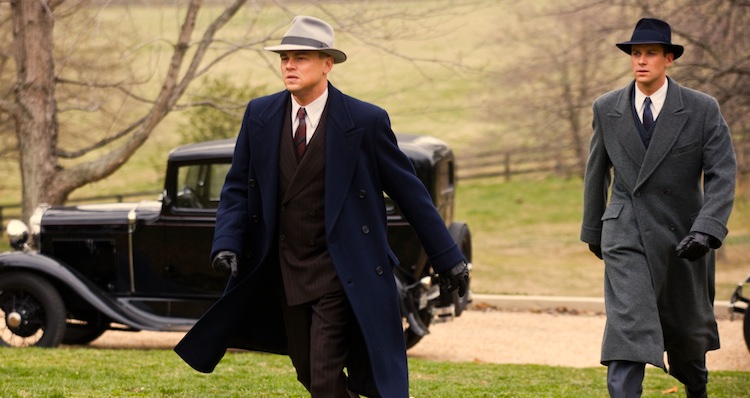
Continue reading Clint Always Gets His Man: LFM Mini-Review of J. Edgar
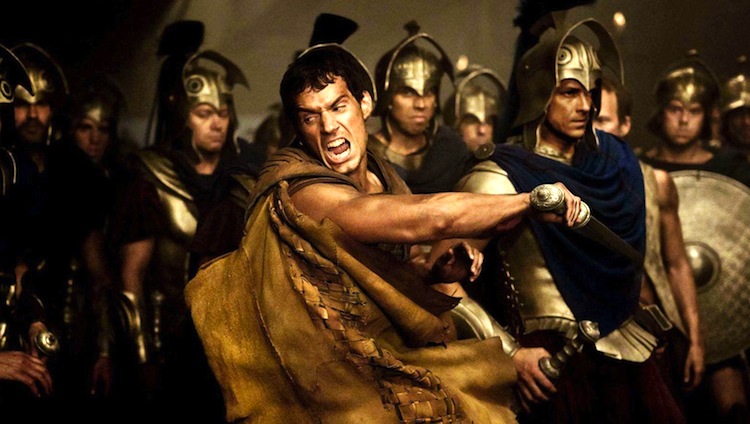
By Jason Apuzzo. THE PITCH: Commercial and music video director Tarsem reinvents the ancient Greek Theseus myth in Immortals, featuring rugged Brit star Henry Cavill (the new Superman) and coming from the same producer, Mark Canton, who revitalized the Sword & Sandal genre with 300.
THE SKINNY: Jettisoning any actual Greek mythology from his story, Tarsem repurposes Theseus’ ancient heroics into a violent, vacuous cross-cultural mash-up for the video game/UFC generation – a stylized ballet of severed limbs, senseless plot devices and wild costuming. Immortals – which likely deserved an X rating – is a film neither for the faint of heart, nor the lively of mind.
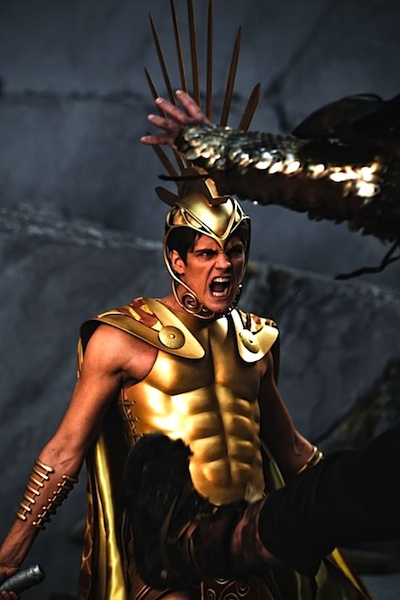
WHAT WORKS: • Although the film’s costumes and production design – which extravagantly blend North African, Indian, Persian and occasionally even some Greek influences – make little sense in the context of the story, they bring a visual novelty to the film that grabs one’s attention. The garb of the Olympian gods, and the armor of the Titans, deserve special praise.
• Years of bizarre behavior and dissipated living have made Mickey Rourke into a good hire to play a wicked tyrant. His King Hyperion, who bears no connection to any Theseus myth I’m aware of, is nonetheless a formidable and interesting villain – a kind of Colonel Kurtz of the ancient world, decked out in bronze bunny ears. As an interesting side note, the disjointed terrain of Rourke’s face has begun to resemble a Paul Klee painting – fascinating to look at (particularly in 3D), even for long spells of time.
WHAT DOESN’T WORK: • Having drained the story of any meaningful connection to Greek mythology or history (which, one assumes, he finds dull), Tarsem has nowhere to go with the Theseus story excerpt to turn it into a generic, head-chopping ‘hero’s journey’ like a thousand similar films before it. Immortals, trite in the extreme, shows less respect to the core cannon of Greek myth than your average comic book movie shows toward comic book lore.
• Outside of Mickey Rourke, Immortals features not a single noteworthy performance – including those of Henry Cavill and Freida Pinto, who make for a handsome but pitifully dull couple. And although Luke Evans is passable as a young Zeus, the rest of the Olympian gods are almost laughable, like something out of a high school performance of Godspell. Continue reading Labyrinth of Woe: LFM Mini-Review of Immortals
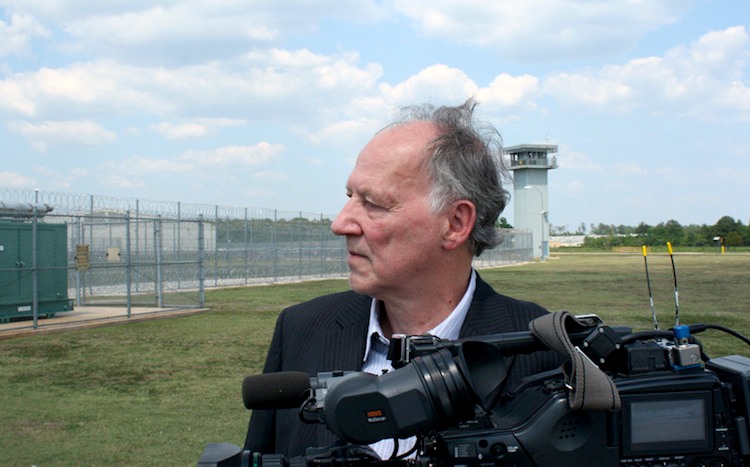
[Editor’s Note: the post below appears today on the front page of The Huffington Post.]
By Govindini Murty. Few directors are as willing to venture into the abyss as Werner Herzog. His prolific body of work has ranged from intense dramas like Aguirre: The Wrath of God and Woyzeck that plumb the depths of the human soul to documentaries like Encounters at the End of the World and Grizzly Man that examine humanity’s fragile place in the miraculous and terrifying world of nature. The astonishing breadth of Herzog’s filmmaking conveys the humanist’s sense of wonder at the world – what he describes as the “ecstasy of observation.”
Herzog’s latest film, Into the Abyss: A Tale of Death, A Tale of Life (opening this Friday, November 11th) is a compelling look at the contentious issue of the death penalty. Producer Erik Nelson has stated that the film is intended to inform the current Republican presidential debate over the death penalty, in particular with regard to the candidacy of Texas Governor Rick Perry. Herzog himself has issued a Director’s Statement expressing his opposition to capital punishment – though in keeping with his lifelong aversion to political interpretations of his work, he has also asserted that Into the Abyss is not a political film. These apparent contradictions point to the enigma of Werner Herzog himself – on the one hand a sensitive humanist with strong moral convictions, yet on the other hand an artist who resists being defined by political activism or party ideology.
Into the Abyss embodies these contradictions. The film tells the true story of a brutal triple murder committed in Conroe, Texas. Michael Perry and Jason Burkett, intending to steal two cars owned by Sandra Stotler, killed Stotler in her home and then lured her son Adam and his friend Jeremy Richardson into the woods and executed them. Perry and Burkett subsequently went on a joy ride in the cars, before winding up in a bloody shoot-out with the police. Perry and Burkett were convicted of the murders, with Perry receiving the death penalty, and Burkett receiving a life sentence.
Herzog interviewed Michael Perry just eight days before his execution, and also interviewed Jason Burkett in prison. Other interviews include those with Burkett’s wife Melyssa Thompson-Burkett, who contacted Burkett while he was in prison and subsequently married him; Fred Allen, a prison captain who worked in the execution chamber and who assisted in over 125 executions before resigning in moral crisis; and most significantly, the relatives of the victims themselves: Lisa Stotler-Balloun, the daughter of Sandra Stotler and sister of Adam Stotler, and Charles Richardson, the brother of Jeremy Richardson. Stotler-Balloun and Richardson in particular provide the most heartbreaking testimony of the film, as Herzog does not shy away from depicting the shattering effect of the murders on their lives. As a result, Into the Abyss exists in a complex tension between Herzog’s avowed position against capital punishment and his impulse as a storyteller to depict both sides of the story and allow readers to make up their own minds.
I had the opportunity to meet with Werner Herzog in Los Angeles recently and discuss with him Into the Abyss and his extraordinary body of work. Part I of this interview appears below.
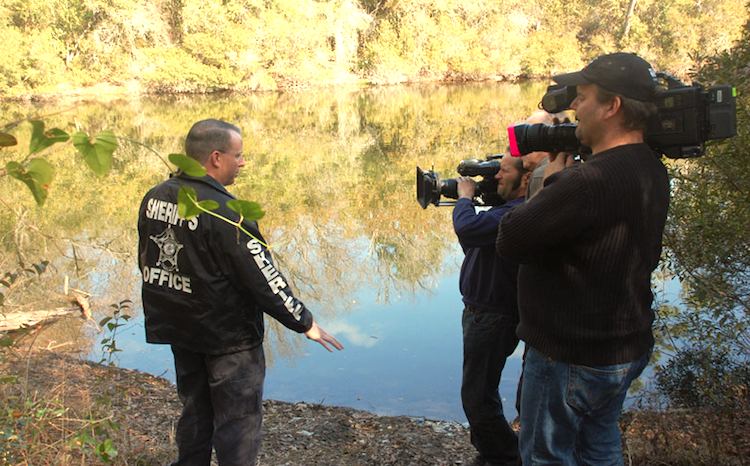
GM: I’d like to ask you about the title of your movie, Into the Abyss, because I’ve seen you refer to the concept of ‘the abyss’ quite a few times in your work. In Woyzeck you have a line “Every man is an abyss, you get dizzy looking in,” and in Nosferatu you have a line “Time is an abyss profound as a thousand nights.” This is a concept you keep referring to – what does ‘the abyss’ mean to you?
WH: It’s a good observation, and when I came up with the title Into the Abyss – it dawned on me that it could have been the title of quite a few other films. Like Woyzeck could have had that title, or The Great Ecstasy of Woodcarver Steiner or even the cave film, Cave of Forgotten Dreams, because I’ve always tried to look deep inside of what we are – deep into the recesses of our existence, of our prehistory – like in Cave of Forgotten Dreams. So it is some sort of a theme that runs through quite a few of my films.
GM: I want to ask you about the relationship between humanity and the universe. There was a wonderful quote at the end of Encounters at the End of the World where Dr. Gorham asks, and I paraphrase, “are we the means through which the universe becomes conscious of itself?” This reminded me of a quote from Blaise Pascal’s Pensées:
“A reed only is man, the frailest in the world, but a reed that thinks. Unnecessary that the universe arm itself to destroy him: a breath of air, a drop of water are enough to kill him. Yet, if the All should crush him, man would still be nobler than that which destroys him: for he knows that he dies, and he knows that the universe is stronger than he; but the universe knows nothing of it.” (Trans. A.J. Krailsheimer)
This seems to apply to Into the Abyss and its depiction of human beings within this world. In the film you go driving down country roads and you show the trailer parks, the run-down stores, the boarded up gas stations, the bars. It looks like a wasteland that God is somehow absent from, and there are these people in the midst of it who are in a terrible state of pain and confusion – in an apparently indifferent universe.
WH: Let me address Pascal first. Yes, I like him very much. I even invented a quote for the film Lessons of Darkness. It starts with a Pascal quote “The collapse of the universe will occur like the creation in grandiose splendor,” and underneath it says Blaise Pascal, but I invented it – and of course Pascal couldn’t have said it better. [Laughs.]
But, it’s interesting. The wasteland, this forlorn landscape, has become fascinating for me – this lost kind of Americana. And one of the death row inmates with whom I spoke – not in this film but in another film I’m already finishing – he said to me how he saw on his very last trip forty-three miles between death row and the death house where they are being executed in Huntsville. And in this cage in the van he sees a little bit of an abandoned gas station, he sees a cow in the field, and all of a sudden for him, everything is magnificent, and he says: “It looked like Israel to me, it all looked like the Holy Land.” And I immediately grabbed my camera and I did this voyage of the forty-three miles and indeed the most forlorn landscapes all of a sudden look like the Holy Land. So I look at these forlorn landscapes all of a sudden with fresh and different eyes. Continue reading LFM’s Govindini Murty at The Huffington Post: A Conversation With Werner Herzog, Part I: Into the Abyss